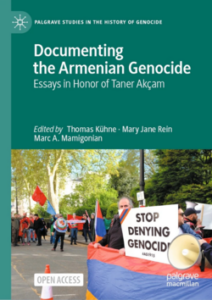
Mediatized Witnessing, Spectacles of Pain, and Reenacting Suffering: The Armenian Genocide and Humanitarian Cinema
Veröffentlicht am: 29.12.2023
Weiteres:
https://link.springer.com/chapter/10.1007/978-3-031-36753-3_5
Abstract
Focusing on the conception, production, distribution (and disappearance) of Ravished Armenia (1919) and Alice in Hungerland (1921), two silent films on the Armenian Genocide from a gendered perspective, this chapter combines media history (“technologies of witnessing”) with the history of global humanitarianism. These two oldest movies on the genocide were shot with the initiative of the Near East Relief in order to raise donations and international awareness through the reenactment of suffering, sensationalization of violence, and victimized Armenian bodies. Both films enjoyed a short-lived fame and revenue, followed by disappearance and subsequent oblivion. The early humanitarian cinematic representation of the Armenian genocide sheds light on the ferocious mediatization and marketing strategies of humanitarian agencies, specifically as to how they targeted the corporal bodies of their lead orphan actresses, Arshalouys Mardigian and Esther Razon, through extensive bodily interventions, enormous workload, and reenactment of suffering.

